The world has changed: the US is reviving its missile defense system
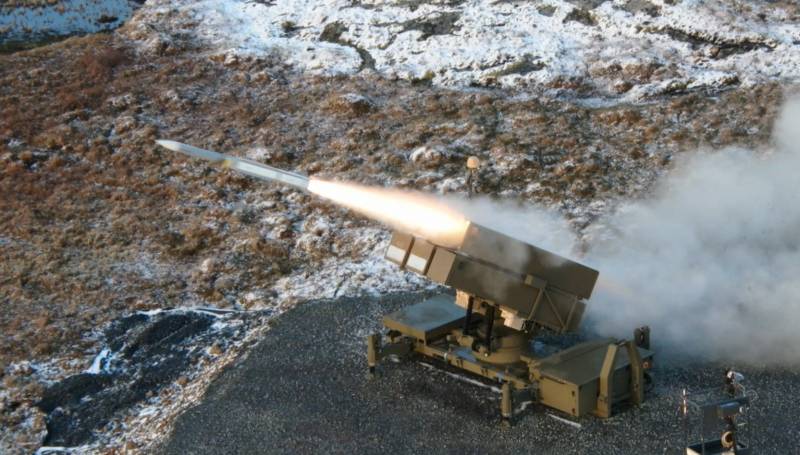
Let's say that what made smart people in the Pentagon think about the prospect is clear: the military action carried out by Russia in Ukraine. And here the question is not only about cruise missiles, it is weapon not so modern at all, but a drone capable of flying up to 1000 km and crashing at an object is a given today.
The most disgusting thing here is that such a UAV does not require a nuclear submarine missile carrier. It can be launched from anywhere, from an icebreaker in the Arctic Ocean to a pleasure yacht near Hawaii. And between these two classes of ships there are still three dozen. And if a rocket requires trained personnel, storage conditions, and the supply of these cute things on board any boat is very limited, then imagine how much drones Can it be stuffed into a standard sea container?
And considering that the leader in the production of these devices today is the number one enemy of the United States, one must think that the United States also firmly assesses the chances and possibilities. And these chances are no less worthy of being examined under a microscope than the demonstrated capabilities of Russian cruise missiles.
There is really something to think about here in light of the SVO and the work of air defense in it on both sides. Especially the nuance when air defense systems attacked missiles heading towards the target, after which the downed missiles fell on residential areas and created very ugly consequences for the civilian population there.
So it's no wonder that the U.S. military has launched a new official (that is, publicly funded) effort to explore options for how to better defend the homeland from the threat posed by increasingly sophisticated Russian and Chinese cruise missiles. This could include returning homegrown surface-to-air missile bases to critical locations across the country, although not on the same scale as during the Cold War. Directed energy weapons, as well as expanded sensor and command-and-control infrastructure supported by artificial intelligence and machine learning technologies, have also been discussed in the past as part of improved missile defense.
Let's put it this way: lasers and railguns are, of course, wonderful, but in terms of using budget billions. Missile bases are more serious, especially considering the degree of love for the United States among individual countries and groups of various stripes.

Inside Defense, a well-respected publication in military circles, recently reported that the Air Force began “analyzing alternatives to the country’s air and cruise missile defenses” back in July of this year. A year earlier, the Pentagon had selected the service to lead and coordinate this effort, which was expected to eventually include contributions from all branches of the U.S. military and the Missile Defense Agency (MDA). This new effort will build on work done in a number of other U.S. air defense planning studies over much of the last decade.
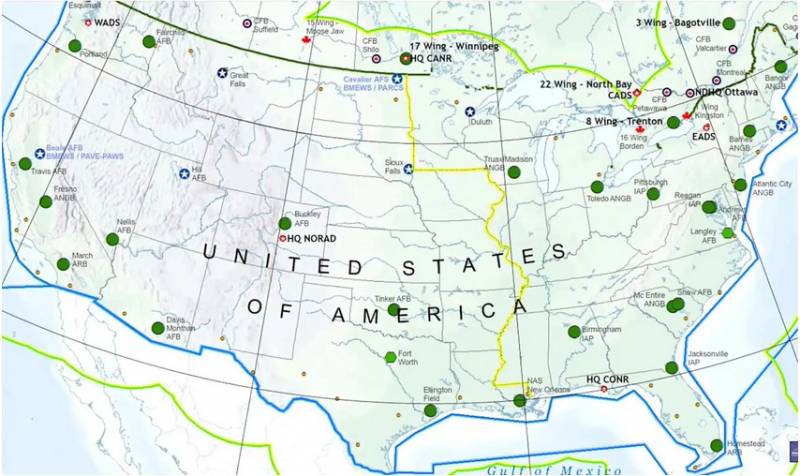
An unclassified map showing air defense sites in the United States, including green circles representing bases housing Air Force fighter aircraft responsible for the nation's defense. Dated 2021.
Inside Defense reported that Deputy Defense Secretary Kathleen Hicks has directed the Air Force, which is leading the project, to think about the first batch of initial investments that could be allocated in the 2026 five-year spending plan. And then identify the second phase of projects that should be included in the five-year spending plan for 2030.
Specific details about what exactly the Air Force is already studying to improve the country's defense capabilities against potential cruise missile attacks remain secret.
Inside Defense has reached out to the Air Force for more information on whether the program is entirely limited to missile defense. Corresponding cruise missile defense capabilities could easily be applied to other threats, including the growing threat posed to domestic infrastructure by various variants of armed or weaponized unmanned aerial vehicles. aviation systems As the current conflict in Ukraine highlights, the line between traditional cruise missiles and drones-kamikaze is already very blurry.
It's no secret that the US military has long been concerned about the threats posed by cruise missiles, which are increasingly spreading even among unofficial and terrorist groups. And the United States has quite a lot of military facilities far beyond the country’s borders. Over the past few decades, U.S. government concerns have grown steadily about the danger these weapons pose to U.S. forces abroad and at home.
In addition to the Russian and Chinese militaries developing and fielding increasingly capable designs, including hypersonic types, both countries are expanding their launch platform options, especially new, more powerful missile submarines.
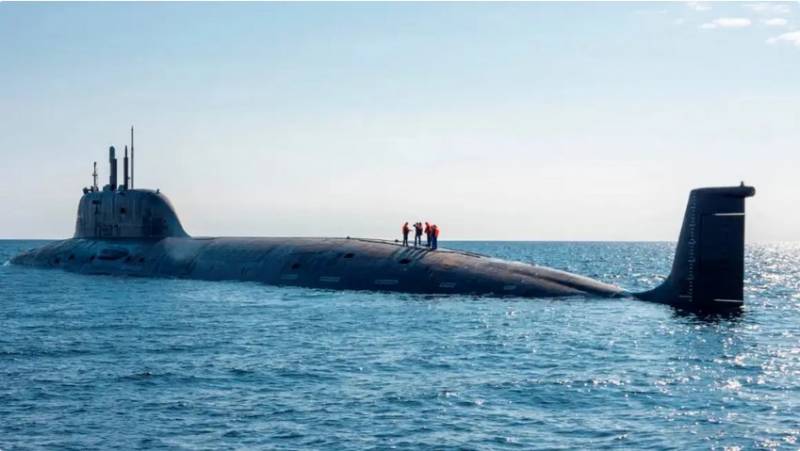
Modern, ultra-quiet missile submarines such as the Russian Yasen-M class have been a particular source of concern for the US military when it comes to the possibility of cruise missile attacks on the United States.
These realities are what prompted the Pentagon to direct the Air Force to explore a multifaceted approach to improving the nation's cruise missile defense. Currently, the air defense capability in the United States is provided by a handful of fighter jets stationed at bases near key locations.
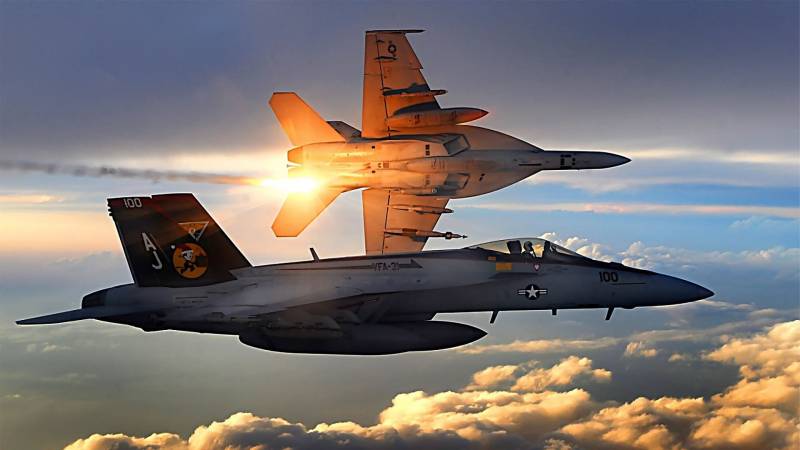
The only truly permanently deployed ground assets in the continental United States are the National Advanced Air Defense Systems (NASAMS) and the AN/TWQ-1 Avengers, located in and around the Greater Washington, D.C. area, also known as the National Capital Region (NCR) ).
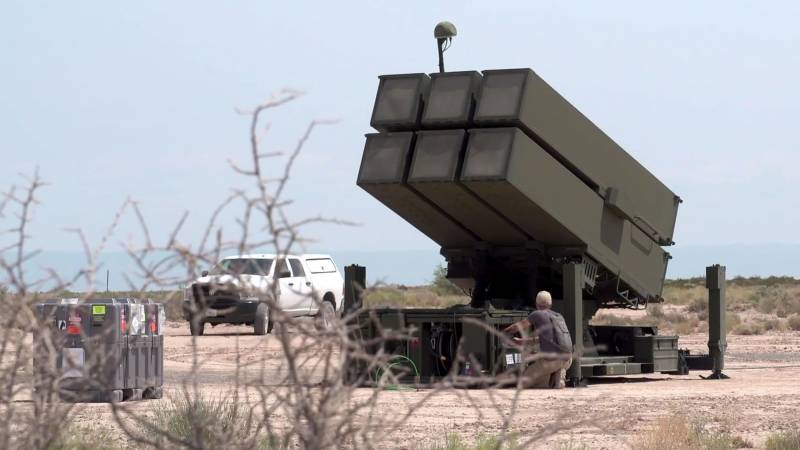
The United States maintains anti-aircraft missile units that can be deployed in the event of war or other major crisis, but their numbers are limited.
In recent years, the Air Force, in collaboration with the U.S. Army, has been actively working to expand NASAMS missile defense capabilities, with a focus on homeland defense. The Air Force is also testing newer ground-based capabilities to kinetically destroy incoming cruise missiles, including a large-caliber gun that fires extremely fast projectiles called the Hypervelocity Ground Weapon System (HGWS).
Documents released along with the Pentagon's fiscal year 2023 budget proposal showed plans to test the HGWS prototype with NASAMS sometime between early July and late September this year. However, it is unclear whether this has happened or is still planned.
The Army and the US Marine Corps are in the process of acquiring new Israeli (!) anti-aircraft missile systems, the Indestructible Shield and Iron Dome, respectively, which is largely due to the desire to create new missile defense systems for forces stationed abroad. But these systems could be used to provide additional air defense capabilities across the United States.
In addition to ground-based kinetic defense options, the Air Force has demonstrated the ability to shoot down enemy cruise missiles with aircraft armed with laser-guided 70mm Advanced Precision Kill Weapon System II (APKWS II) missiles. Other kinetic and non-kinetic weapons, including directed energy weapons and electronic warfare systems mounted on various platforms, may be part of the final US missile defense system.
A reliable detection and targeting system consisting of radars and other sensors will also be required. Detecting and tracking cruise missiles, which typically fly at very low altitudes and can fly at supersonic and now hypersonic speeds, is notoriously difficult.
First things first - airplanes?
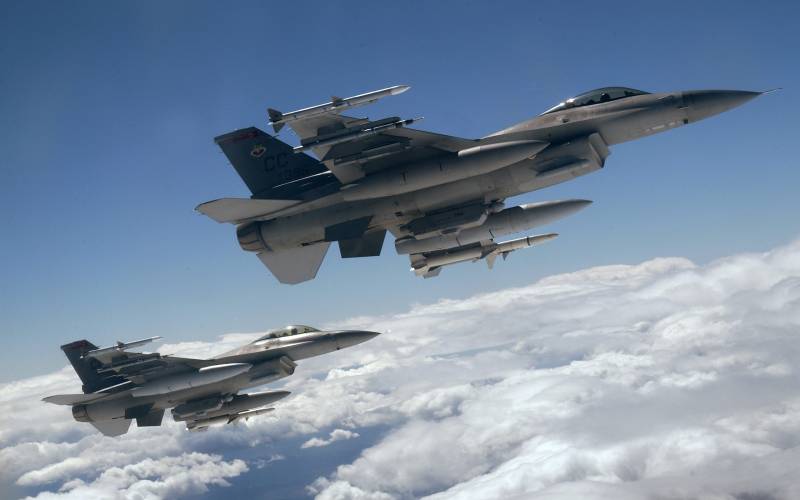
A key reason for retrofitting the Air Force's F-15C/D Eagle fighter interceptors with AN/APG-63(V)3 Active Electronically Scanned Array (AESA) radars was to provide them with a more effective ability to detect and track cruise missiles. In general, certain hopes are placed on the effectiveness of upgraded fighters to the F-16C/D Viper with new radars with AFAR. Future versions of the F-15EX, the acquisition program for which is currently under development, will also have AESA radars.
Attention is also being paid to continuing work on the creation of a flying surveillance platform. The idea of hanging platforms with early warning radars over the country's territory was shelved after the failure of the Army's Joint Land Attack Cruise Missile Defense Elevated Netted Sensor System (JLENS) radar airship program, but not closed. That work began in 1996 and was canceled about two decades later due to numerous cost overruns, delays and other problems. In a particularly notorious incident in 2015, a prototype JLENS balloon deployed at the Army's Aberdeen Proving Ground in Maryland became unstuck and drifted into neighboring Pennsylvania, its frayed mooring line system knocking down power lines along the way. He eventually lost altitude and became entangled in a tree. But, I repeat, the idea has not lost its relevance yet.
Additionally, command and control networks will be needed to tie everything together. The Army is already in the process of deploying a new centralized air and missile defense network called the Integrated Battle Command System (IBCS), which could, under certain conditions, be integrated into ABMS, the Air Force's larger surveillance and air defense management system.
The upcoming interfacing of systems with Canada will have certain problems. While the United States has a long-standing air defense partnership with Canada through NORAD, future planning will need to address all aspects of incorporating Canadian air defense capabilities into the overall system.
Last year, the Defense Science Board published an unclassified summary of the future of U.S. homeland air defense, conducted by Council experts as part of the beginning of research into a program to build a new system. In the vision of experts, the use of technologies such as artificial intelligence, groups of satellites in low orbit and the seeker of interceptor missiles based on new guidance principles will be normal.
Artificial intelligence and machine learning can certainly be very valuable in helping air defense crews quickly prioritize which incoming threats to respond to and how to do so in the most effective way, as well as simply assisting them in the initial acquisition of those targets. It could even alert U.S. air defense forces to possible strikes before they happen.
In general, a series of tests called “Global Information Dominance Experiments” (GIDE) took place in the United States in 2021. It has everything: artificial intelligence, machine learning, GEOINT (geospatial intelligence) sensors on the satellite and, as expected, huge costs for everything.
The US government's Defense Science Board, which advises the Office of the Secretary of Defense, has named its notional future integrated air defense network Strategic Aerospace Guard II (SAGE II). This was a direct reference to the SAGE network, which was used to protect the skies over the United States and Canada during the Cold War.
The conditionality of the future network is due to one of the key obstacles that the Air Force and the rest of the US military will need to overcome: cost. It is already understood that attempting to create a modern version of a Cold War-style domestic air defense network and directly protect all critical military and civilian infrastructure with kinetic defense would be prohibitively expensive.
“Exorbitantly” is, translated into today’s conditions, memories of the times when the United States was very afraid of a Soviet strike. And they defended themselves with what the country had at its disposal, that is, Nike air defense systems. Nike systems were used domestically between 1953 and 1979, and the air defense network eventually consisted of nearly 300 individual air defense batteries.

Would this be enough if the USSR attacked US territory? Today Americans believe not.
What does security cost?
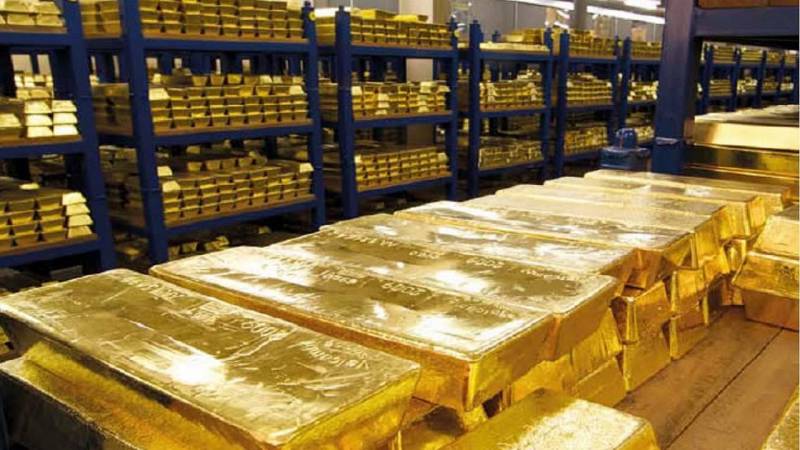
In 2021, the Congressional Budget Office (CBO) released a report estimating that acquiring and operating a variety of new and upgrading old air defense capabilities to protect the United States as well as some outlying areas could cost between $75 billion and $465 billion over the next 20 years, or from 3,75 to 23,25 billion dollars per year.
Who wasn't horrified by the number? By comparison, the U.S. military is asking for a total of $29,8 billion across all services for “missile and air defense capabilities” in fiscal year 2024.
On the one hand, one can, of course, gloat in anticipation of how the Americans will spend the next billions on... But they have no problems with dollars, so they will definitely spend them, but what if there is an effect?
The impact is the development of a new, flexible, and layered approach needed to provide a reasonable level of defense against cruise missiles and other airborne threats throughout the United States. And already within the framework of the developed concept, it will be possible to begin to develop and improve the technical part.
Beyond more traditional air defense measures, including mobile deployable assets that can be sent to where they are most needed in any given situation, other steps could be taken to simply receive advance warning of incoming strikes.
Van Herk also acknowledged what he called miscalculations in protecting the airspace over North America when a Chinese spy balloon flew over parts of the United States and Canada earlier this year. This balloon, as well as three other still unidentified objects, were subsequently shot down in US and Canadian airspace, but at what cost and in what time frame!
The incidents are said to have led to immediate action, including changing the sensitivity of air defense radars that missed the balloons, but serious questions remain about the policies and procedures in place at the time. Air defense is a branch of the military that must act quickly, and not think for days, watch a balloon imposingly floating in the skies or a drone flying about its business. The ball can fly away, but the drone, as practice shows, can fly in.
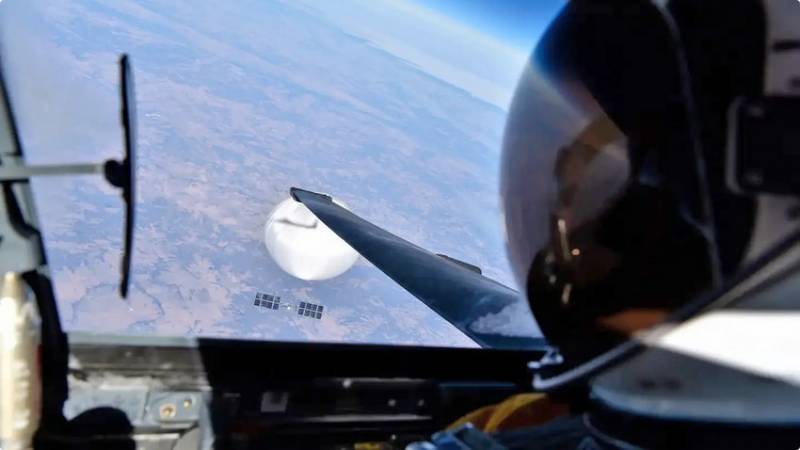
But all this talk about radar and sensors is great. The amounts that developers would like to receive to implement their programs are also excellent.
But there is another, no less serious question: how to shoot down?
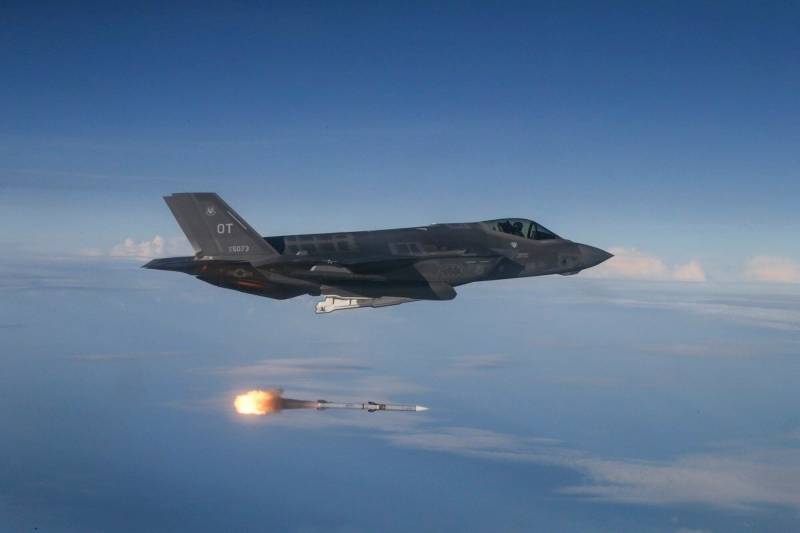
Today in the United States there is simply a terrible bias towards aviation, which must solve all problems in the air. And this also puzzles some thinking people in the United States. And this is normal, because an airplane is a delicate and delicate device that requires a certain approach. For example, a runway cleared of snow and cleared of ice. For example. And, whatever one may say, aviation pays attention to weather conditions.

To carry out air defense exclusively by aviation - well, even in the USA they already understand that this is wrong. ICBMs and cruise missiles - they, of course, will wait until the fog clears, remove snow and ice from the runway, and so on. And an incomprehensible ball will also kindly hover in the sky, waiting for the F-22 to find it and shoot it from a cannon...
Of course, today no one is talking about three security belts for the country, as in the 60s. They couldn’t do it in the USSR either, they just built a ring around Moscow. But covering the most important objects with something other than airplanes is necessary.
But for this you still need air defense systems! Obviously so...
What does the US Army have at its disposal? If we are talking about real missile defense systems, and all the headaches of the US officials cited above are about missile defense, then these are four (as of 2020) dozen THAAD systems and twice as many MIM-104F Patriot PAC-3/PAC-3 MSE . That is, about 120.
In the old days, 300 Nike-Hercules air defense systems were not enough. Now it’s 120. We draw our own conclusions about who’s doing what.
Yes, there are quite decent Israeli “Iron Domes” and Norwegian NASAMS. But, firstly, these are short-range air defense systems, which in the case of the Israeli air defense system are good at intercepting almost everything that flies, and secondly, there are also few of them. And how they will work against cruise missiles that fly above the ground, and even at supersonic speeds, is a question. But that's a question for later.
In the meantime, in the United States it is worth thinking not only about airships and satellites stuffed with sensors, but about trivial launchers, which are clearly in short supply. If we are talking specifically about creating a full-fledged air defense system that can protect the country from any attacks.
And this smells like another stack of billions. In addition to the bundle that is planned to be used for innovation in organizing surveillance and control systems. And this is without sarcasm or mockery, indeed, if a new air defense system is created, which will be designed to protect the United States from any encroachments from Russia, China, international terrorist groups, unfriendly or very aggressive aliens, then observation systems and aircraft will definitely it is necessary to add air defense missile systems that will cover the most important objects on the territory of the country.
This, of course, is not 400 billion over 20 years, but stretching 200 billion over 10 years - why not? There would be, as they say, a desire, and it can be seen in what the American military is now saying and planning.
Missile defense of critical infrastructure clearly remains a major source of concern. Finding the right mix of capabilities, and those that can be acquired and fielded at a reasonable cost in the next 5 to 10 years, to meet this challenge is a key reason the Air Force is conducting its new analysis of air defense alternatives. Well, taxpayers need to prepare some more money.
Actually, this is the answer to the question above: the revival of the national air defense network is happening because it is possible to carry out such a difficult undertaking. Whether there is a real threat from China and Russia or not is not even the tenth question. This is of no interest to anyone at all. Another thing is interesting, and you and I understand perfectly well what is behind the suddenly increased threat from Russian and Chinese missiles to the United States.
Information